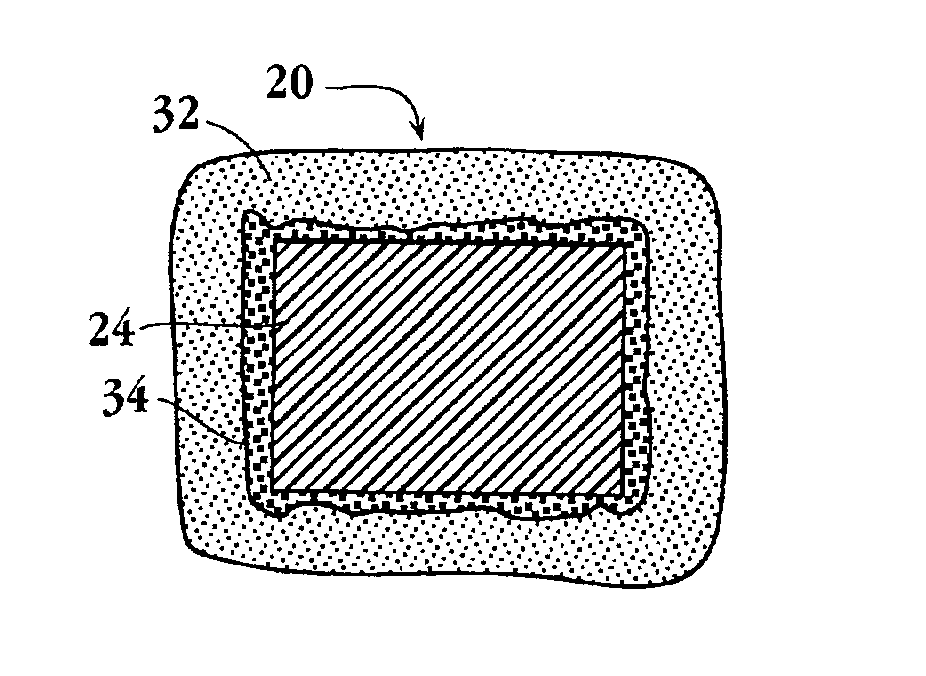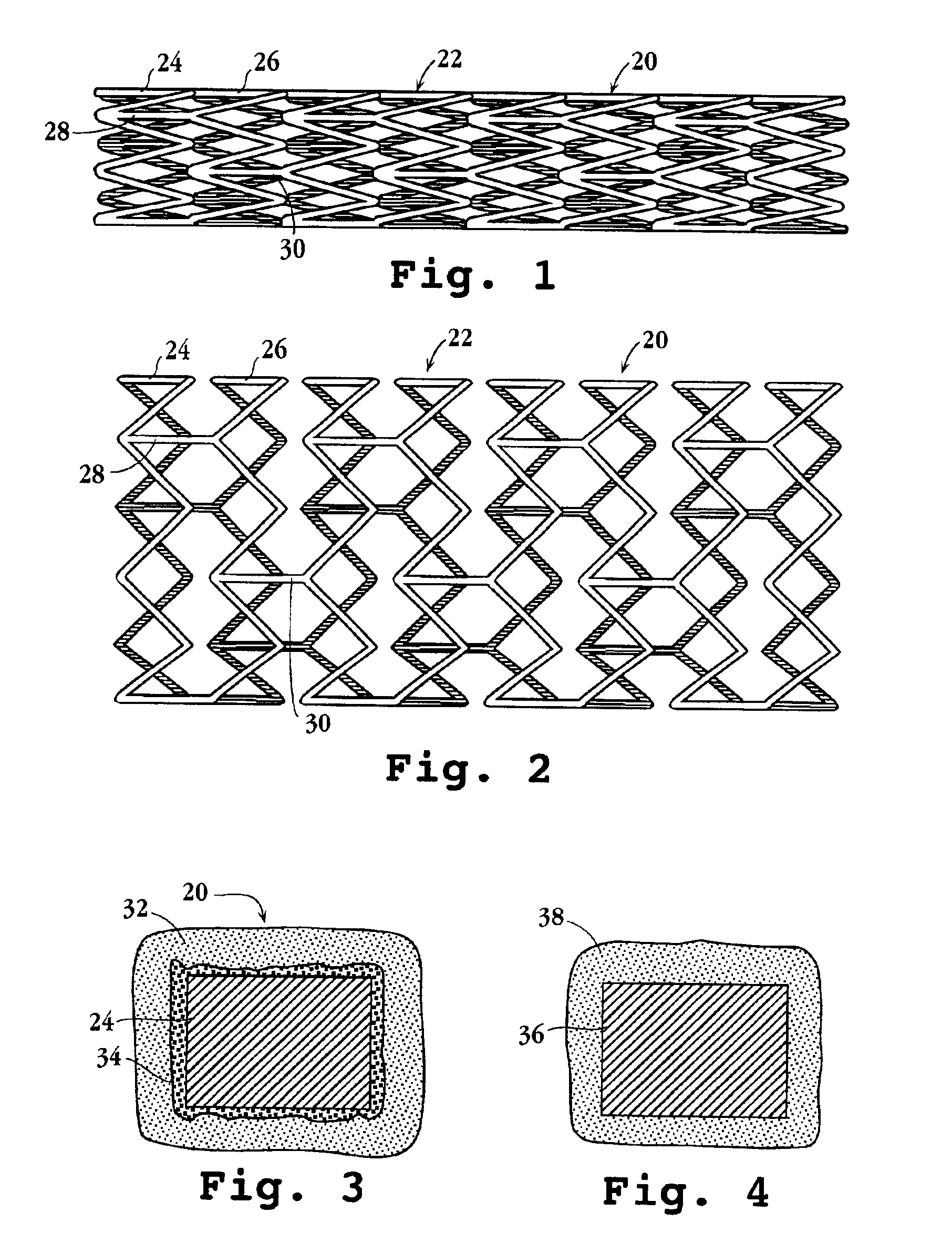Drug-delivery endovascular stent and method for treating restenosis
a technology of endovascular stent and drug delivery, which is applied in the field of endovascular drug delivery stent and a method for treating restenosis, can solve the problems of reducing or eliminating the beneficial effect of angioplasty/stenting procedure, blood clots may also form inside the newly implanted stent, and normal damage to endothelial cells which line the inside surface of the vessel lumen
- Summary
- Abstract
- Description
- Claims
- Application Information
AI Technical Summary
Benefits of technology
Problems solved by technology
Method used
Image
Examples
example 1
Preparation of Everolimus and Derivatives Thereof
Step A. Synthesis of 2-(t-butyldimethylsilyl)oxyethanol(TBS glycol).
[0101]154 ml of dry THF and 1.88 g NaH are stirred under in a nitrogen atmosphere in a 500 ml round bottom flask condenser. 4.4 mL dry ethylene glycol are added into the flask, resulting in a large precipitate after 45 minutes of stirring. 11.8 g tert-butyldimethylsilyl chloride is added to the flask and vigorous stirring is continued for 45 minutes. The resulting mixture is poured into 950 mL ethylether. The ether is washed with 420 mL brine and solution is dried with sodium sulfate. The product is concentrated by evaporation of the ether in vacuo and purified by flash chromatography using a 27×5.75 cm column charged with silica gel using a hexanes / Et2O (75:25v / v) solvent system. The product is stored at 0° C.
Step B. Synthesis of 2-(t-butyldimethylsilyl)oxyethyl Triflate (TBS Glycol Trif)
[0102]4.22 g TBS glycol and 5.2 g 2,6-lutidine are combined in a double-necked 1...
example 2
Preparation of Stent Containing Everolimus in a poly-dl-lactide Coating
[0105]100 mg poly (dl-lactide) was dissolved into 2 mL acetone at room temperature. 5 mg everolimus was placed in a vial and 400 μL lactide solution added. A microprocessor-controlled syringe pump was used to precision dispense 10 μL of the drug containing lactide solution to the stent strut top surfaces. Evaporation of the solvent resulted in a uniform, drug containing single polymer layer on the stent.
[0106]A 15 μL volume was used in a similar manner to coat the stent top and side strut surfaces, resulting in a single layer coating on the stent strut top and sides.
example 3
In Vitro Drug Release from Stent Containing Everolimus in a poly-dl-lactide Coating
[0107]In vitro drug release was conducted by placing the coated stents into 2 mL pH 7.4 phosphate buffered saline solution containing 25% ETOH, and preserved with 0.05% (w / v) sodium azide and maintained at 37° C. Sampling was periodically conducted by withdrawing the total buffer volume for drug measurement while replacing solution with a similar volume of fresh buffer (infinite sink). FIG. 7 illustrates drug release from two similar stents coated with a single polymer layer microdispensed in this manner.
PUM
| Property | Measurement | Unit |
|---|---|---|
| thickness | aaaaa | aaaaa |
| thickness | aaaaa | aaaaa |
| thickness | aaaaa | aaaaa |
Abstract
Description
Claims
Application Information
 Login to View More
Login to View More - R&D
- Intellectual Property
- Life Sciences
- Materials
- Tech Scout
- Unparalleled Data Quality
- Higher Quality Content
- 60% Fewer Hallucinations
Browse by: Latest US Patents, China's latest patents, Technical Efficacy Thesaurus, Application Domain, Technology Topic, Popular Technical Reports.
© 2025 PatSnap. All rights reserved.Legal|Privacy policy|Modern Slavery Act Transparency Statement|Sitemap|About US| Contact US: help@patsnap.com



